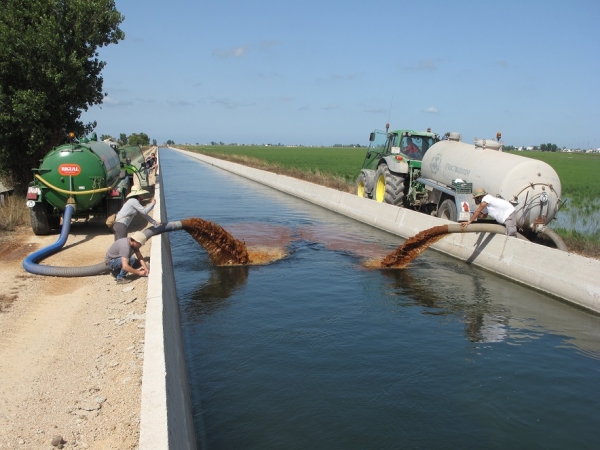The most important thing about a research project, in addition to the results obtained, is the degree of real applicability it achieves; that is, the feasibility of transferring the conclusions obtained to an existing problem, and helping to solve it. In this regard, the LIFE EBRO-ADMICLIM project, in which the University of Cordoba has participated, focused on providing solutions to the problems suffered by the Ebro Delta, and finding solutions that can be transferred to other deltas around the world.
This project, which began in 2014, focused on the ecosystems of the area, and all the research partners were in local sectors, in Catalonia, directly or indirectly using the Delta. Their concern, among others, centred on the accumulation of medium-sized sediment in the dams of the Ebro River's main course and the long-term consequences that it could have for the emerged area.
The dynamic equilibrium between the transport of sediment by the river, which feeds a delta upon being deposited on the coast, the effects of the marine and atmospheric agents on this, and the phenomenon of subsidence, make the delta grow or recede, but a very high percentage of the fluvial contribution of sediments has been retained by upstream reservoirs, above the mouth, for decades. When we add to this the impact of the rise in sea levels, and storms, such as Gloria in January 2020, which flooded 3,000 hectares of rice fields, with water advancing up to 3 kilometres inland, we find that, in general, the Ebro Delta is losing surface area and, with it, the conditions for the activities it supports. Hence, the project sought to mitigate the effects of climate change and human action in the Ebro Delta, which is also affected by subsidence, due to rising sea levels.
This is where the UCO research group came in. "They called us because they wanted to propose a specific adaptation strategy. The possibility of reinjecting sediments of the appropriate size and seeing whether, with the current dynamics of the river, they could reach the mouth and adequately feed that area of the Delta", explains María José Polo, a professor in the Hydraulic Engineering Area of the María de Maeztu Excellence Unit in the Department of Agronomy at the University of Cordoba (DAUCO).
The sediment injection trials downriver showed that the actions planned were, in fact, able to alleviate the problem, the arrival of sediments was favoured, and benefits were found for both the ecosystem and the agricultural resources. "The project aimed to demonstrate actions that were technically possible and quantify their effect." Thus, they previously carried out a sediment circulation model, with simulations of various scenarios, and designed and participated in the tests in situ.
The result was satisfactory. In fact, one of the actions ended up leading to a subsequent pre-project to be implemented on a full scale and with an impact that could be expanded to other deltas. "Deltas around the world have the same problem. The basins may have different characteristics, but in the end they all suffer the same vulnerability." There are currently various public initiatives to advance in this direction in the Ebro.
In parallel, tests were run with other alternatives focused on the reuse of sediments generated as residue at a water purification plant. This residue, whose properties are very beneficial, was injected into the network of irrigation canals to feed the agricultural areas of the Delta, and for soil dynamics. Professor Polo points out that, "the monitoring of this action was simpler due to the ease of observing the conditions in a channel opposite a riverbed. And, because the sediments were reddish, the advance was directly visible".
This project action was very successful, so it has been converted into a continuous feeding system. In addition, in the network of channels they designed a tool with a user interface through which the affected sectors could evaluate and carry out their own management to get an idea of how long it would take for the sediments to reach each point of the irrigation sectors.
The LIFE EBRO-ADMICLIM project - “Adaptation and mitigation measures to climate change in the Ebro Delta” (LIFE13 ENV / ES / 001182) - was funded by the European Union through the LIFE+ 2013 call.
Report financed by the CONSOLIDA-UCO ECT2020-000810 project through the Europe Networks and Managers - Europe Technological Centers 2020 call.


